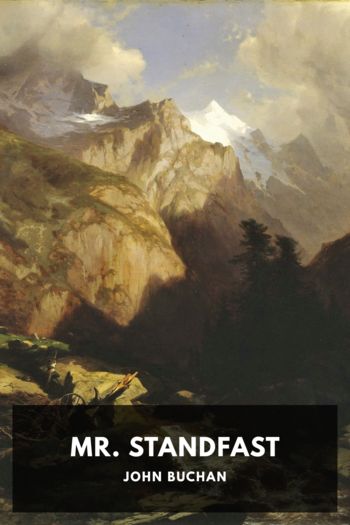Freedomnomics: Why the Free Market Works and Other Half-Baked Theories Don't by John Jr. (books to read for 12 year olds txt) 📗

- Author: John Jr.
Book online «Freedomnomics: Why the Free Market Works and Other Half-Baked Theories Don't by John Jr. (books to read for 12 year olds txt) 📗». Author John Jr.
Donohue and Levitt responded to these criticisms by developing new estimates of abortion’s effect on crime, estimates that they claimed accurately reflect whether a criminal was born before or after the legalization of abortion. The most accurate data, however, continue to show that legalized abortion increased crime. Furthermore, a new working paper by the pair does not use the most relevant data—the FBI’s Supplemental Homicide Report (SHR). See Donohue and Levitt, “Measurement Error, Legalized Abortion, the Decline in Crime: A Response to Foote and Goetz (2005),” University of Chicago Working Paper, January 2006. One crucial advantage of the SHR is that it records information according to the date that crimes were committed, not the date of arrest. For crimes such as murder, many years can elapse between the crime and the perpetrator’s arrest, thus skewing annual statistics. Based on SHR figures, my study with Whitley not only links dates of each criminal’s birth with what the abortion law was at that time, but also takes into account cross-state mobility. Unfortunately, the FBI only directly linked a criminal’s characteristics with when the crime occurred for the data regarding murder, not any other crime. Apparently, the only other study that uses the SHR is by Ted Joyce, who also found that the legalization of abortion implies more murders. See Ted Joyce, “The Inconsequential Association Between legalized Abortion and Age Specific Crime Rates,” Baruch College Working Paper, March 2006.
39 John R. Lott, Jr. And John Whitley, “Abortion and Crime: Unwanted Children and Out-of-Wedlock Births,” Economic Inquiry, Advanced Access published June 29, 2006, 5-6.
40 Abortion Law, History & Religion, The Canadian Health Network (http://www.cbctrust.com/history_law_religion.php#62). Although a 1969 Canadian abortion law loosened some restrictions on abortion, the law was nevertheless extremely strict. A committee of at least three doctors had to decide whether an abortion was necessary to protect the mother’s health, and the mother had no right to appeal their decision. These conditions were as strict as the most restrictive U.S. state laws prior to 1970. Studies of other countries have also cast doubt on the theory that abortion reduces crime. See Leo Kahane, David Paton, and Rob Simmons, “The Abortion-Crime Link: Evidence from England and Wales,” Department of Economics, California State University, East Bay Working paper, March 2006 and Christopher L. Foote and Christopher F. Goetz, “Testing Economic Hypotheses with State-Level Data: A Comment on Donohue and Levitt (2001),” Federal Reserve Bank of Boston Working Paper No. 05-15, November 22, 2005.
41 However, as discussed later in this chapter, the impact of race on crime rates during the 1990s was very small. All the demographics for age, race, and sex accounted for only about 1 percent of the change in crime rates.
42 John R. Lott, “Does a Helping Hand Put Others at Risk?,” Economic Inquiry, April 2000, 241 and 242.
43 The survey was conducted for the U.S. Department of Justice and Nassau County, New York. See Marvin Dunnetted, Joan G. Haworth, Leaetta Hough, James L. Outtz, Erich P. Prien, Neal Schmitt, Bernard Siskin, and Sheldon Zedeck, “Police Selection and Promotion Practices Survey Results,” HRStrategies (April 1993), 18.
44 Ibid.
45 “Test Officials Question State’s Move,” The Advocate (Baton Rouge, La.), August 31, 1996.
46 Spielman, Fran, “Mayor Defends Hiring Promotion Decisions on Police and Firefighters,” Chicago Sun-Times (January 31, 1996): 16, and “U.S. Judge OKS Exam for Firefighting Hiring; Ruling Ends 2 Decades of Federal Oversight,” Chicago Tribune, July 25, 1995.
47 Flannery, Mary, “Fitness Standards Set Up Through ‘Gender Norming,’” Houston Chronicle, September 11, 1995, 2.
48 Frank J. Landy, Principal Investigator. Alternatives to Chronological Age in Determining Standards of Suitability for Public Safety Jobs, volume 1: Technical Report, Boulder, Colorado: Saville and Holdsworth, 31 (January 1992).
49 Mary Ellen Synon, “Q. How do you help criminals get away? A. Easy, recruit women officers,” Mail on Sunday (London), May 1, 2005, 59.
50 The central part of my research examined the largest 189 cities in the U.S. According to the U.S. Department of Justice, nineteen of those cities had consent decrees with the US government. Those consent decrees restricted the cities’ ability to include intelligence tests in hiring new employees.
51 John R. Lott, Jr., “Does a Helping hand Put Others At Risk?: Affirmative Action, Police Departments, and Crime,” Economic Inquiry, vol. 38, no. 2 (April 2000): 239-277.
52 Ibid.
53 A gun might not be as much of an equalizer for female officers as it is for women who use a gun defensively. Officers are frequently called upon to have physical contact with the criminals that they are pursuing, while women who use a gun defensively merely use the gun to keep a threatening person at bay.
54 John R. Lott, Jr., “Does a Helping hand Put Others At Risk?: Affirmative Action, Police Departments, and Crime,” Economic Inquiry, vol. 38, no. 2 (April 2000): 257-260.
55 Bryan Hubbell and Randall Kramer, “An Empirical Bayes Approach to Combining Estimates of the Value of a Statistical Life for Environmental Policy Analysis,” US Environmental Protection Agency National Center for Environmental Economics Working paper, November, 2001. W. Kip. Viscusi, Fatal Tradeoffs: Public and Private Responsibilities for Risk. (New York: Oxford University Press, 1992).
56 Uniform Crime Report, “Law Enforcement Officers Killed and Assaulted, 2005,” FBI, Department of Justice, October 2006 (http://www.fbi.gov/ucr/killed/2005/downloaddocs/feloniouslykilled.pdf). For information on accidental deaths of police see http://www.fbi.gov/ucr/killed/2005/table46.htm.
57 This is a fairly typical year. Over the ten





Comments (0)